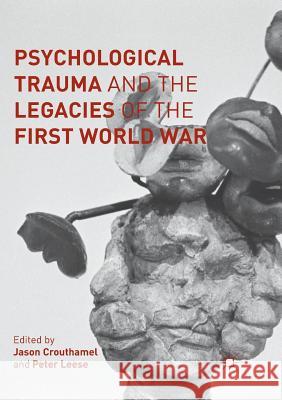Psychological Trauma and the Legacies of the First World War » książka
topmenu
Psychological Trauma and the Legacies of the First World War
ISBN-13: 9783319815237 / Angielski / Miękka / 2018 / 335 str.
Kategorie BISAC:
Wydawca:
Palgrave MacMillan
Język:
Angielski
ISBN-13:
9783319815237
Rok wydania:
2018
Wydanie:
Softcover Repri
Ilość stron:
335
Waga:
0.42 kg
Wymiary:
21.01 x 14.81 x 1.85
Oprawa:
Miękka
Wolumenów:
01
Dodatkowe informacje:
Wydanie ilustrowane











